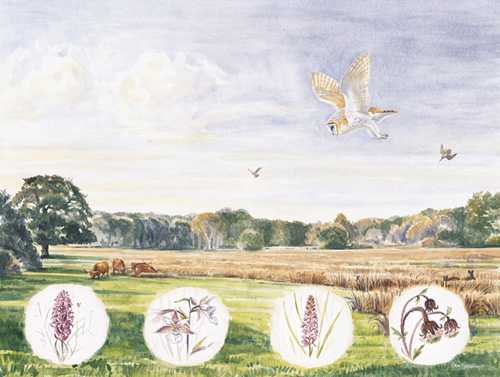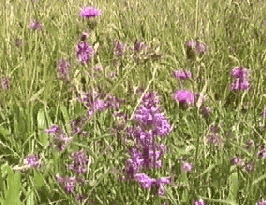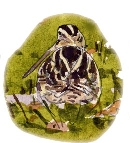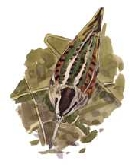Guided walks organised by the Countryside Ranger allow visitors the chance to see some of the fen specialities growing in the peaty soils close to the millpond. On such a visit in June you will see hundreds of Southern Marsh Orchids and in July the scarce Marsh Helleborine (Epipactis palustris) and Marsh Fragrant Orchid (Gymnadenia densiflora) should be in bloom.
For more information about wildflowers visit: www.plantlife.org.uk a charity dedicated to furthering the conservation of the UK's plants.


In August, Green-veined White butterflies (Artogeria napi) abound and can be seen nectaring on Water-mint (Mentha aquatica) and around the Bramble (Rubus fruiticosus) bushes. Gatekeeper butterflies (Pyronia tithonus) can also be abundant feeding on the flowers. Long-winged Coneheads (Conocephalus discolor) (a type of bush-cricket) leap out of the way of the walker. Hemp Agrimony (Eupatorium cannabinum) and Betony (Stachys officinalis), both typical plants of old unimproved damp meadows, offer further nectar sources for late summer butterflies on the fen. Brimstone butterflies (Gonepteryx rhamni) can often be seen nectaring on Betony flowers.
To find out more about butterflies and moths and their conservation in the UK visit: www.butterfly-conservation.org
Hoe Road Meadows on the north edge of the Moors is owned and managed by Hampshire Wildlife Trust as a small nature reserve. It is on a south facing slope and is slightly drier than the Moors. Field Scabious (Knautia arvensis) is abundant in this meadow in mid-summer and its blue flowers are an attractive sight. For further information about the work of the Trust visit their website: www.hwt.org.uk
A winter walk across the Moors might
produce sightings of three species of wading bird that winter in the wet
meadows, the woodland and around the springheads:


